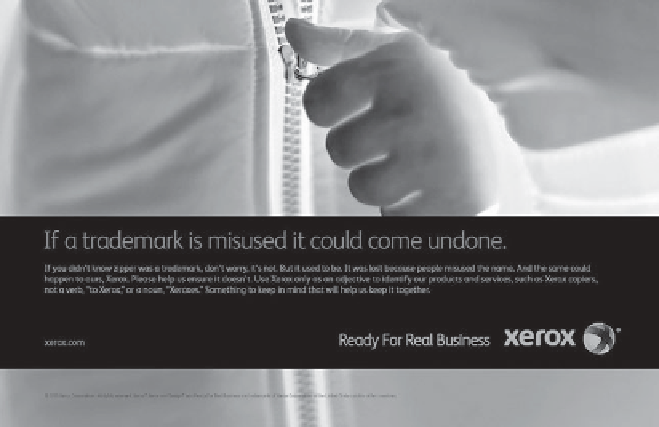Information Technology Reference
In-Depth Information
FIGURE 4.4
Xerox Corporation ran this advertisement as part of its campaign to protect
its trademark.
(Screenshot by Xerox. Copyright © 2012 by Xerox Corporation. All rights reserved.
Reprinted with permission.)
POLAROID v. KODAK
Dr. Edwin Land invented “instant” photography. The company he founded, Polaroid
Corporation, had 10 patents protecting the invention of film that developed in 60 sec-
onds. Polaroid did not license these patents to other firms, and for many years it was
the only company to sell cameras and film allowing photographs to be developed in a
minute.
When Kodak introduced its first instant camera in 1976, Polaroid sued Kodak [21].
In 1985 a court ruled that Kodak had infringed on seven of Polaroid's original ten
patents; six years later Kodak paid Polaroid a $925 million settlement [22, 23].
SPARC INTERNATIONAL
Sometimes companies see an advantage in licensing their inventions. After Sun Mi-
crosystems invented the SPARC architecture, it wanted to maximize the number of
SPARC-compliant computers being manufactured. For this reason, Sun transferred
ownership of the SPARC specifications to an independent, nonprofit organization called
SPARC International. SPARC International has licensed SPARC technology to a variety
of other firms. In 2013 the list of companies manufacturing SPARC-based systems in-
cluded Epoka Group A/S, Fujitsu Computer Systems, Itronix, Motorola, Nature World-
wide Technology Corporation (NatureTech), Rave Computer Association, Inc., Oracle
Corporation, Themis Computer, and Toshiba Corporation.

